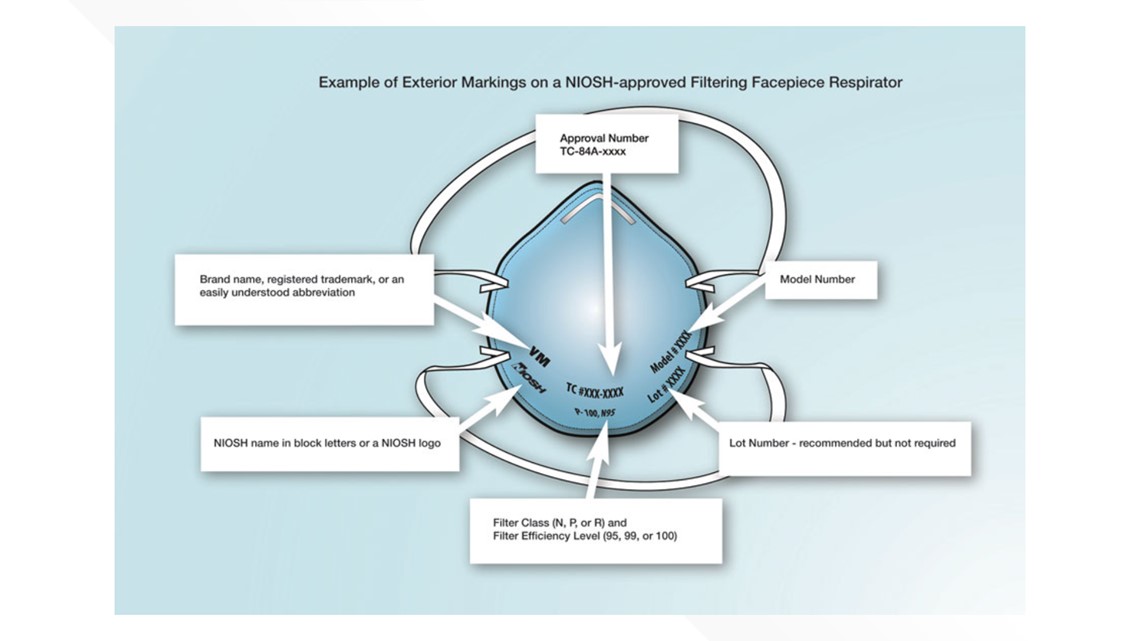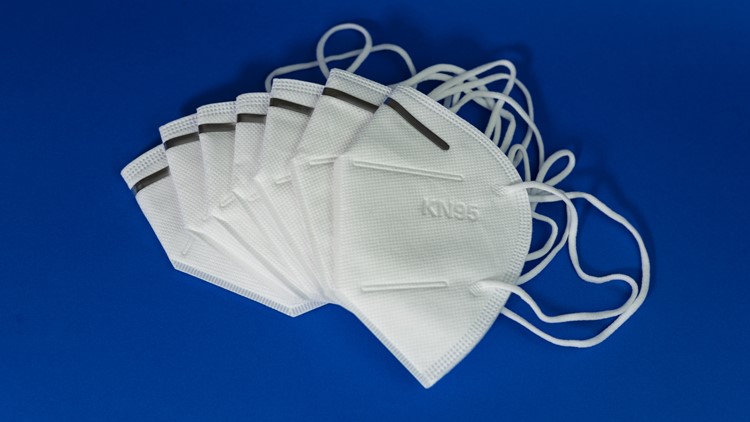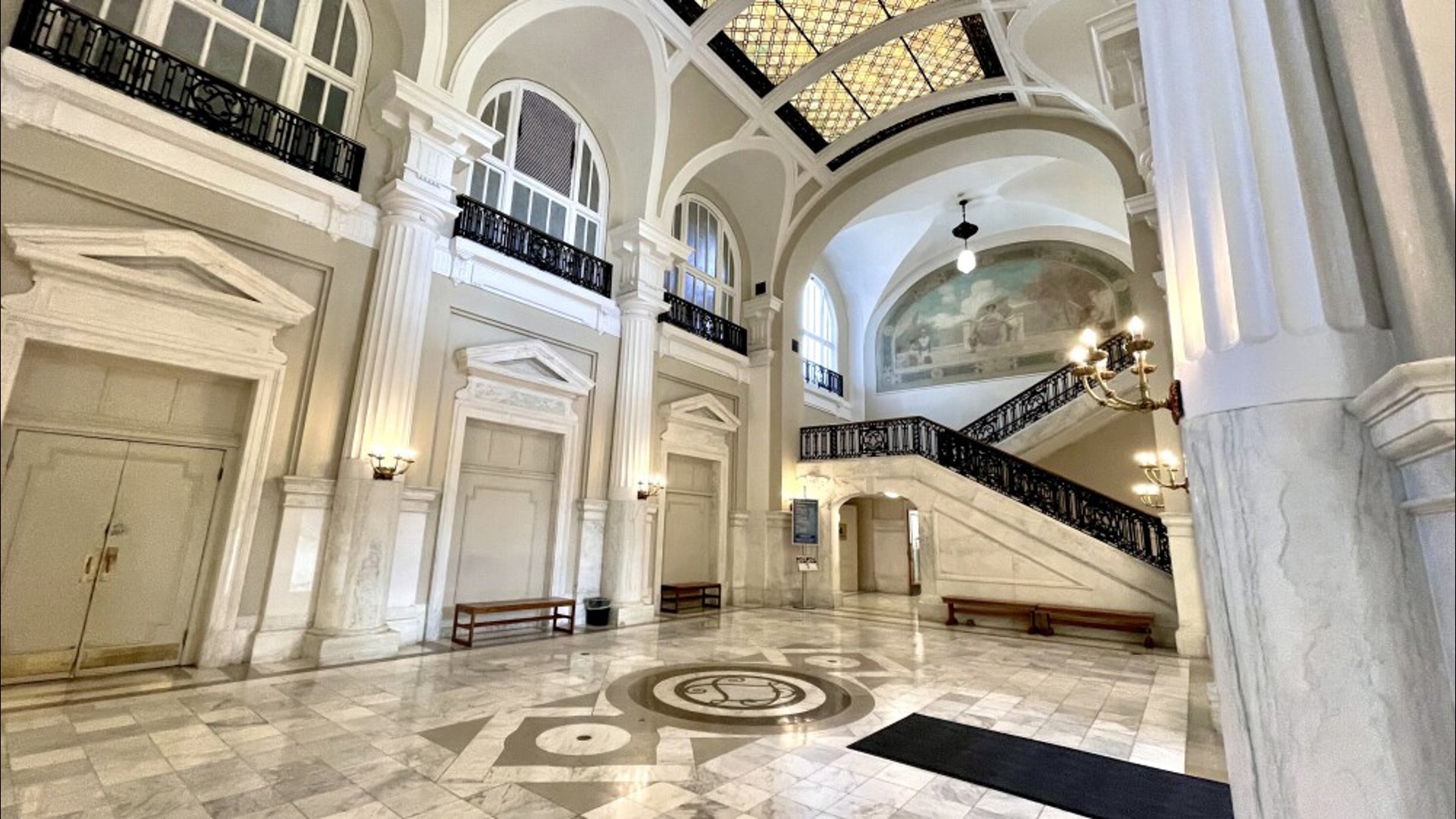As the highly transmissible omicron variant of COVID-19 continues to surge in the United States, the Centers for Disease Control and Prevention (CDC) recently updated its guidance on which types of masks offer the most protection in preventing the spread of COVID-19.
Well-fitting respirators, including N95s, that have been approved by the National Institute for Occupational Safety and Health (NIOSH), offer the highest level of protection against COVID-19, according to the CDC. Meanwhile, the federal public health agency says about 60% of the KN95 masks marketed in the U.S. in 2020 and 2021 failed to meet NIOSH standards and were flagged as counterfeit. In fact, U.S. Customs and Border Protection officers have seized millions of counterfeit masks since the start of the pandemic. Now, many people online are wondering if there are ways to spot a fake mask.
THE QUESTION
Is there a way to determine if a KN95 or N95 mask is counterfeit?
THE SOURCES
- Centers for Disease Control and Prevention (CDC)
- The National Institute for Occupational Safety and Health (NIOSH)
- U.S. Customs and Border Protection (CBP)
- ECRI
- Amazon
- Nikki Vars McCullough, Vice President, Global Application Engineering and Regulatory, 3M Personal Safety Division
THE ANSWER
Yes, there are ways to determine if a KN95 or N95 mask is counterfeit.
WHAT WE FOUND
The National Institute for Occupational Safety and Health (NIOSH) is the federal agency responsible for testing and approving masks and respirators used in workplaces in the United States. Before a mask is approved by NIOSH, it goes through the agency’s Respirator Approval Program, which ensures masks and respirators meet minimum construction, performance and respiratory protection standards.
NIOSH does not approve KN95 masks or any other masks that are designed to adhere to international standards. According to the CDC, KN95 masks are manufactured in China and adhere to Chinese governmental standards.
Signs your N95 mask is NIOSH-approved
The NIOSH marks every mask it approves with a label and approval number. Here’s how to find that information.
First, check for an approval label on or within the mask’s packaging or look for an abbreviated approval on the mask itself. There should be a number included in this certification.


You can verify this approval number on the NIOSH Certified Equipment List or on NIOSH's Trusted-Source page.
NIOSH-approved masks will always have one of the following designations:
- N95
- N99
- N100
- R95
- R99
- R100
- P95
- P99
- P100
“If you have an N95 that doesn't have any printing on it, then it's probably not an authentic N95 and I would avoid using that,” said Nikki Vars McCullough, who serves as the global technical service and regulatory manager for the personal safety division at mask manufacturer 3M.
Signs your N95 mask is counterfeit
NIOSH lists ways to detect whether your mask may be counterfeit on its website:
- No markings at all on the filtering facepiece respirator
- No approval (TC) number on filtering facepiece respirator or headband
- No NIOSH markings
- NIOSH spelled incorrectly
- Presence of decorative fabric or other decorative add-ons (e.g., sequins)
- Claims of approval for children (NIOSH does not approve any type of respiratory protection for children)
- Filtering facepiece respirator has ear loops instead of headbands
- Pictures on the packaging are not clear
You can also look for alerts about specific products known to be fake.
When NIOSH becomes aware of counterfeit masks or those misrepresenting NIOSH approval, the agency will typically post photos of the masks and their packaging online to alert users, purchasers and manufacturers. Click here to view NIOSH’s most recent list of counterfeit masks.
Signs your KN95 is authentic
ECRI, the largest patient safety organization in the U.S., published a study in September 2020 that showed up to 70% of the nearly 200 KN95 masks it tested did not meet NIOSH standards for effectiveness, finding that many of the imported KN95 masks did not filter 95% of aerosol particulates as its name suggests. However, Michael Argentieri, ECRI’s vice president for technology and safety, said while KN95s don’t meet U.S. regulatory standards, they “still generally provide more respiratory protection than surgical or cloth masks.”
Kelly Carothers, director of government affairs for Project N95, told VERIFY sister-station WTHR there is one trick to check to make sure a KN95 is a real one.
"You have to look on the side of the mask. It should say GB2626-2019 or GB2626-2006,” said Carothers.
What to look for when shopping online
Throughout the pandemic, many people have used sites like Amazon to purchase their masks, and some have questioned the authenticity of the masks sold in Amazon’s marketplace. An Amazon spokesperson told VERIFY in a statement that the company has implemented a “rigorous seller vetting and product review process to ensure compliance with applicable laws, regulations and Amazon policies.”
“Before listing N95 and KN95 masks in our store, we verify that they are sourced from a trusted manufacturer by inspecting supplier invoices to trace inventory, reviewing packaging and product descriptions, and comparing against the CDC’s counterfeit mask list,” the spokesperson said.
Amazon customers can also contact the company’s customer support team for a full refund of their order if a product doesn’t arrive or isn’t as advertised.
Here are some things to look out for when shopping for masks online, according to NIOSH:
- If a listing claims to be “legitimate” and “genuine,” it likely is not
- If a retailer or manufacturer claims KN95 masks are NIOSH-approved
- Look at the transaction history and reviews, if possible
- Are there changes to the items sold over time (high or low periods of transaction)?
- Are there price changes or swings? (Is it too good to be true?)
- Look at the quantity a buyer has in stock
- Does the seller break marketplace policy and hide their contact information within images?
- Is the primary contact email address connected to the website or is it a free email account?
- Look for bad grammar, typos and other errors
- Watch for cookie-cutter websites, where the sellers interchange several websites
How to report a counterfeit mask
Before reporting a counterfeit mask to NIOSH, the agency says you should first check whether the identified mask is counterfeit or misrepresenting a NIOSH approval by looking up the TC approval number (e.g., TC 84A-XXXX) on the NIOSH Certified Equipment List and verifying the required approval markings. Then check the Counterfeit Respirators/Misrepresentation of NIOSH Approval webpage to see if that respirator is listed.
If the mask is not listed, you may send an email to PPEConcerns@cdc.gov with details about the respirator. If possible, NIOSH says to include photos of the mask and its packaging with your submission. People can also report counterfeit COVID-19 products, including masks, to the Food and Drug Administration (FDA) by emailing FDA-COVID-19-Fraudulent-Products@fda.hhs.gov



